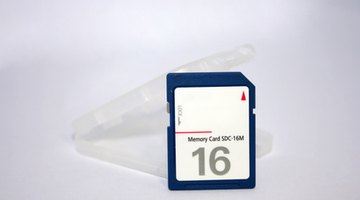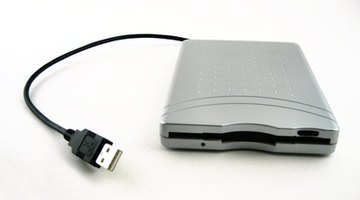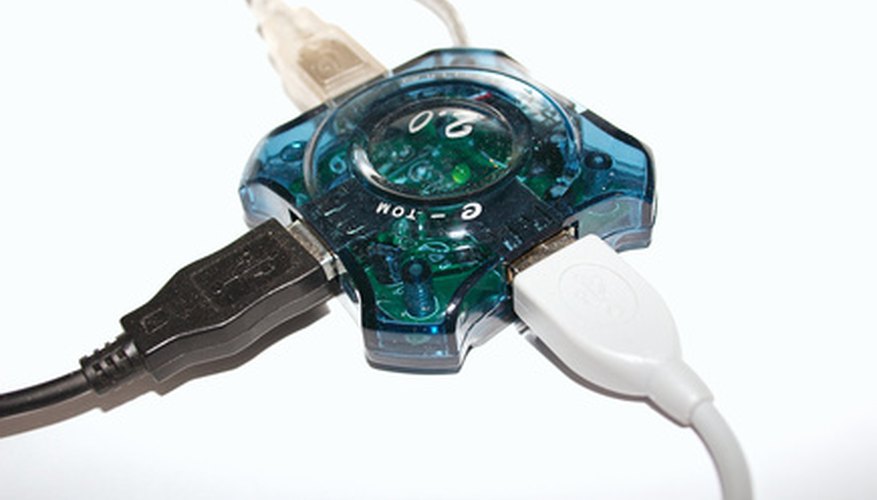The Asus EEE 2G Surf PC is one of several Surf models of ultraportable netbooks released by Asus in 2007. About the size of a large paperback novel, the 2G Surf comes in five colours --- black, white, pink, sky blue and pale green --- and typically shipped with a custom Linux OS called Xandros, a derivative of Debian. The specs on the 2G include only 2 GB of hard-disk space in a soldered flash-drive, and a non-upgradeable 512 MB of RAM. Nonetheless, devotees of the 2G Surf can perform several upgrades and customisations to the machine quite easily.

Upgrade the hard-disk space. The 2G Surf comes with only 2 GB of hard-disk storage space, most of which is occupied by the operating system and its included software, such as OpenOffice, Skype and Firefox. The hard drive is an SDD flash drive that is directly soldered onto the motherboard, and can't be easily upgraded internally. Though many 2G owners get creative with online file-storage solutions, the other option is to purchase an SD card with as much storage space as you can afford. As of October 2010, you can purchase SD cards cheaply with 2 GB, 4 GB, 8 GB, 16 GB and even 32 GB of storage space, all of which can be used to store programs, documents, photos and other kinds of files. Determine how much storage space you anticipate needing, then purchase an SD card and push it directly into the SD reader on the side of the 2G Surf. The operating system will automatically detect the SD card and treat it as a second hard drive.
- The Asus EEE 2G Surf PC is one of several Surf models of ultraportable netbooks released by Asus in 2007.
- The hard drive is an SDD flash drive that is directly soldered onto the motherboard, and can't be easily upgraded internally.
Install a USB hub. The 2G Surf comes with only three USB ports: one on the left edge of the machine, and two on the right. These can be quickly occupied by basic peripherals such as a keyboard, mouse, flash drive and printer. If you want to add any other extras to the computer beyond the three existing ports, you'll need to add a USB hub to increase the number of available ports. The most basic of these will add up to five additional USB ports. The hubs come in very small packages, which you can safely tuck into the 2G's carrying case.

Connect an external optical drive. The Eee 2G and 4G Surf netbooks are small in size. Part of its compact size is accomplished by sacrificing an optical drive. The netbook doesn't come with a CD-ROM or DVD drive, which can seriously limit the programs you can install on your machine. Xandros, the native OS on the 2G, easily recognises most optical drives on a plug-and-play basis. Simply plugging an optical drive into a free USB port will significantly expand the capabilities and horizons of the 2G by allowing you to install any program on CD-ROM. If it's a CD-R or DVD-R drive, it'll also allow you to create backups. Most external optical drives are small, lightweight and designed for portability, so they can be transported safely in padded laptop carriers along with your 2G netbook.
- The 2G Surf comes with only three USB ports: one on the left edge of the machine, and two on the right.
- Most external optical drives are small, lightweight and designed for portability, so they can be transported safely in padded laptop carriers along with your 2G netbook.
TIP
If anything goes irreparably wrong during installation or tweaking of your 2G Surf, you can reset it back to its original factory settings by rebooting it while pressing the "F9" key. This will erase any programs and files you've added since you first turned it on, so be sure to back up any important information and files before resetting it.
WARNING
Although you could theoretically install an internal webcam into the netbook's plastic frame, it isn't recommended for anyone without extensive experience in soldering delicate computer parts. Besides voiding the computer's warranty, it might possibly damage your netbook.
